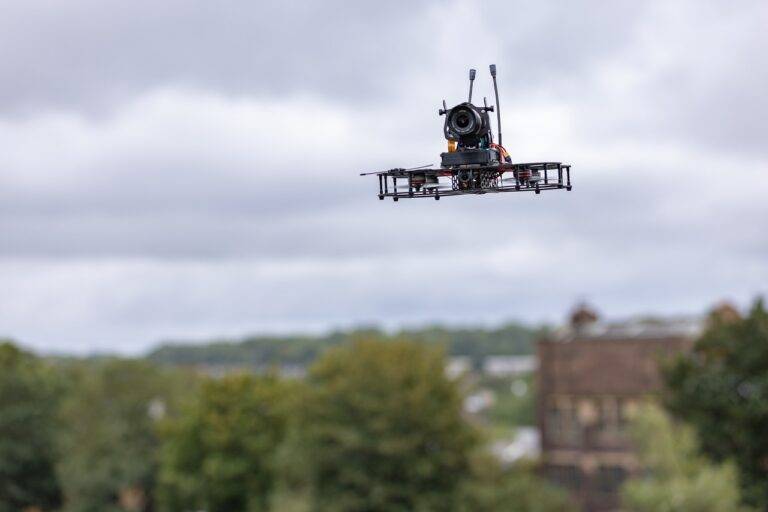Exploring the Applications of AI in Wildlife Conservation Tracking
AI technology is increasingly being utilized in wildlife conservation tracking efforts to monitor and protect various species across different habitats worldwide. By deploying AI-powered camera traps and sensors, researchers are able to gather detailed data on animal movements, behaviors, and population dynamics in a more efficient and non-intrusive manner. This data not only enhances our understanding of wildlife ecology but also aids in the development of effective conservation strategies to safeguard endangered species and their habitats.
Moreover, AI algorithms are being employed to analyze vast amounts of satellite imagery to detect changes in land use, deforestation, and illegal activities that pose threats to wildlife conservation. This remote sensing technology enables conservationists to detect and respond to environmental changes quickly, helping to mitigate potential risks to wildlife populations and ecosystems. Overall, the applications of AI in wildlife conservation tracking demonstrate the potential to revolutionize how we monitor and protect the planet’s biodiversity.
Advantages of Using AI in Wildlife Conservation Tracking
AI offers significant advantages in wildlife conservation tracking. By utilizing AI technologies, conservationists can efficiently analyze vast amounts of data collected from tracking devices such as GPS collars and camera traps. This analysis provides valuable insights into animal behavior, migration patterns, and population dynamics, aiding in the development of effective conservation strategies.
Furthermore, AI helps in the identification and classification of species, making it easier to track endangered or elusive animals. The use of AI-powered algorithms enables real-time monitoring of wildlife populations, helping conservationists respond promptly to threats such as poaching or habitat loss. Overall, the integration of AI in wildlife conservation tracking enhances the precision and efficacy of conservation efforts, ultimately contributing to the protection of biodiversity.
Challenges Faced in Implementing AI in Wildlife Conservation Tracking
One major challenge faced in implementing AI in wildlife conservation tracking is the need for large datasets for training AI algorithms. Without sufficient and diverse data, AI models may not be able to accurately identify and track wildlife species. Gathering and organizing such datasets can be a time-consuming and resource-intensive task, especially in remote and inaccessible areas where wildlife conservation efforts are crucial.
Another challenge is the potential bias in AI algorithms, which can lead to inaccurate or flawed results in wildlife tracking. AI systems rely on the data they are trained on, and if this data is biased or incomplete, it can result in biased predictions and decisions. Ensuring that the AI algorithms are trained on unbiased and representative data poses a significant challenge for wildlife conservationists and researchers working to implement AI technologies in tracking and monitoring wildlife populations.
• One major challenge faced in implementing AI in wildlife conservation tracking is the need for large datasets for training AI algorithms.
• Gathering and organizing such datasets can be time-consuming and resource-intensive, especially in remote areas.
• Without sufficient and diverse data, AI models may not accurately identify and track wildlife species.
• Another challenge is the potential bias in AI algorithms, leading to inaccurate results in wildlife tracking.
• If the data used to train AI algorithms is biased or incomplete, it can result in flawed predictions.
• Ensuring that AI algorithms are trained on unbiased and representative data poses a significant challenge for conservationists.
What are some common applications of AI in wildlife conservation tracking?
Some common applications of AI in wildlife conservation tracking include species identification, population monitoring, habitat mapping, and poaching detection.
What are the advantages of using AI in wildlife conservation tracking?
The advantages of using AI in wildlife conservation tracking include increased efficiency, accuracy in data analysis, real-time monitoring, and the ability to cover larger areas of wildlife habitats.
What are some challenges faced in implementing AI in wildlife conservation tracking?
Some challenges faced in implementing AI in wildlife conservation tracking include limited access to data, technical expertise required to develop AI algorithms, high costs associated with implementing AI technology, and potential ethical concerns related to privacy and data security.
How can organizations overcome the challenges of implementing AI in wildlife conservation tracking?
Organizations can overcome the challenges of implementing AI in wildlife conservation tracking by fostering collaborations with technology experts, securing funding for AI projects, establishing clear ethical guidelines for data collection and usage, and investing in training programs for staff members.





